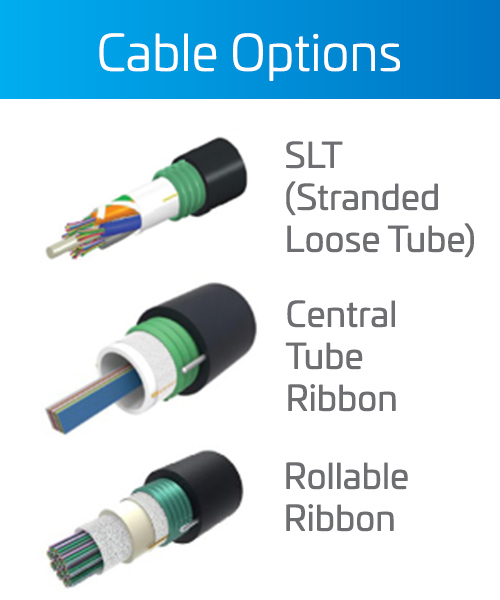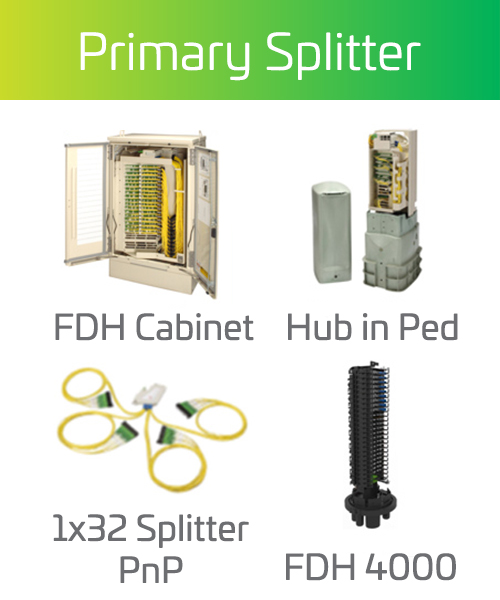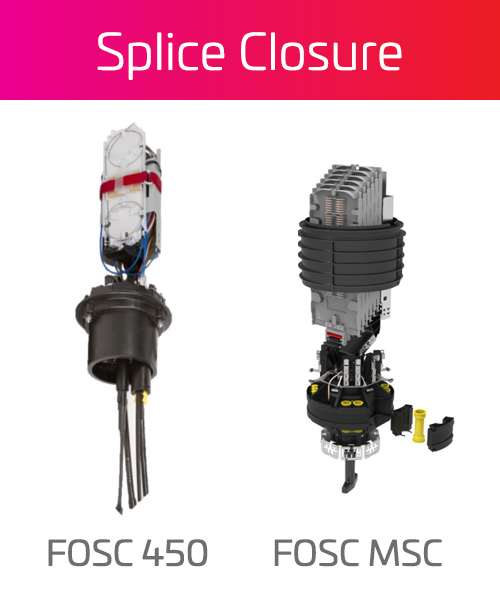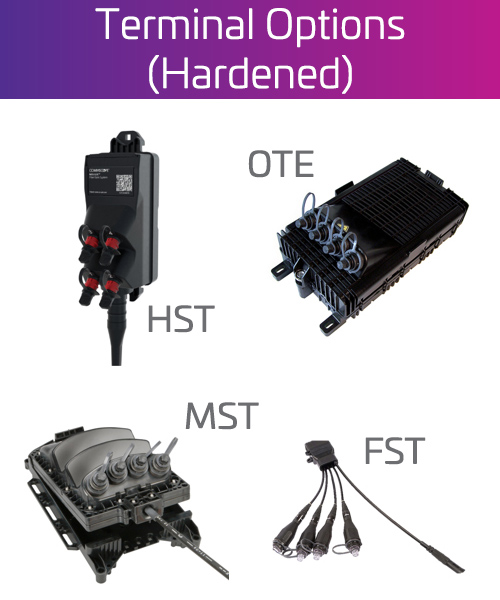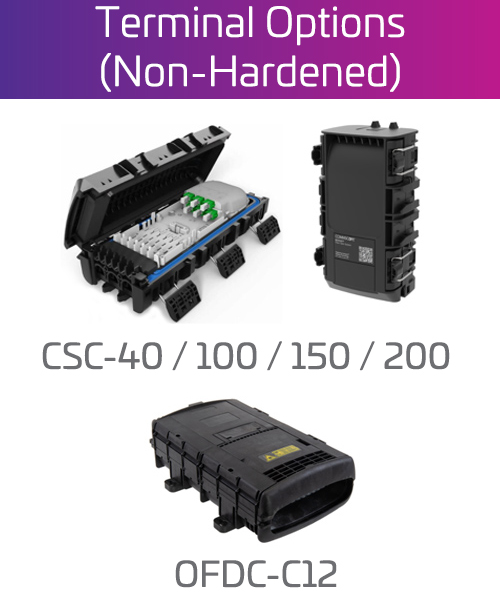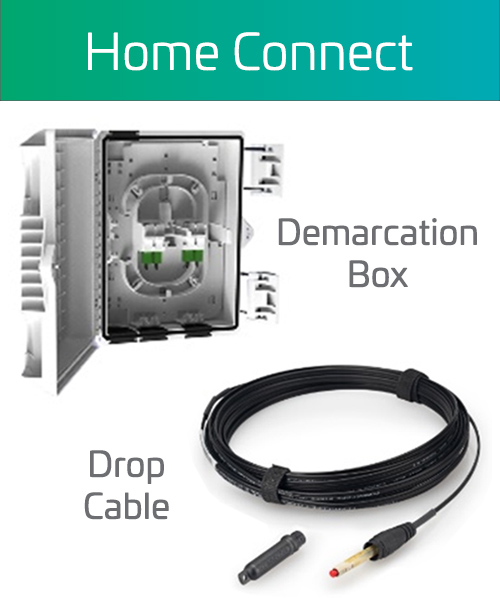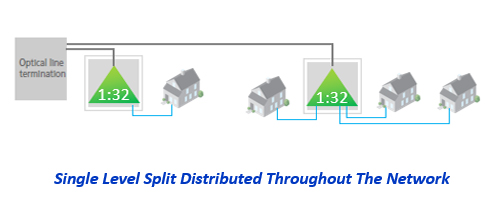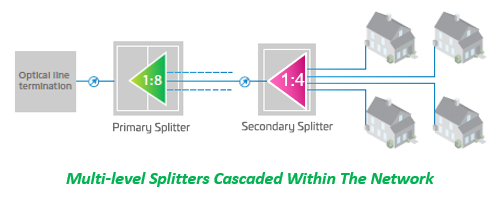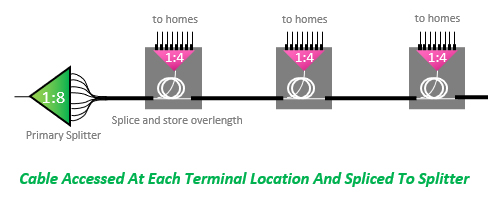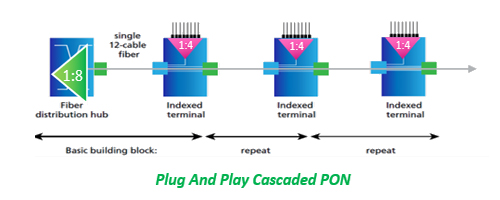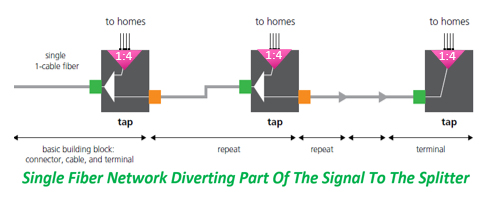Centralized Architecture
Centralized split architecture consolidates all the splitters within a single enclosure, typically a Fiber Distribution Hub (FDH) cabinet. A dedicated fiber from the FDH to each premises is managed and routed through splice closures and presented as a single port on an access terminal--from which the optical fiber drop cable is connected to provide the final link to the home.
This network provides an extremely flexible infrastructure allowing for simplified network upgrades and maintenance activities and providing splitter bypass functionality for PtP (Point-to-Point) services.
.
Pros
- Centralized fiber configuration location
- Maximum Network Flexibility
- Consolidated splice locations
- Excellent OLT utilization
- Ability to offset CAPEX
Cons
- High fiber count cables
- Increased splice quantity
- Duplicated cable install of terminal tails
- Increased civils requirements
- Increased permitting requirements


